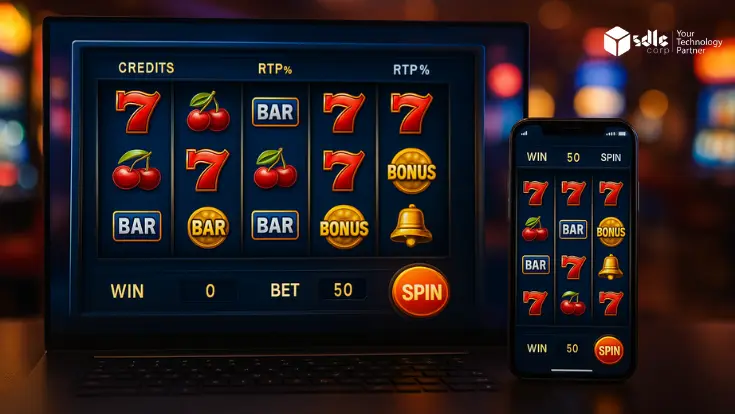The cozy game genre has captured the hearts of gamers worldwide, offering a blend of soothing gameplay, charming environments, and a gentle, relaxed experience. Graphics play a pivotal role in shaping these virtual worlds, whether through nostalgic pixel art or visually stunning high-definition graphics. In this blog, we will explore the evolution of cozy game graphics, charting the progression from the humble beginnings of pixel art to the immersive, vibrant high-definition visuals of today.
As the cozy gaming genre continues to grow, so does the need for specialized expertise in crafting these comforting experiences. Many game development companies are stepping up to meet the rising demand by offering tailored game development services that help developers bring their creative visions to life. In this context, cozy games are now being shaped with advanced technology and innovation.
Start Crafting Your Own Cozy Game with Expert Development Services Today!
Our expert team is here to guide you every step of the way.

The Early Days: Pixel Art and Simplicity
When cozy games first emerged, pixel art was the primary visual style, driven by technical limitations in the hardware of early gaming systems. However, these limitations became an integral part of the charm of the genre. Pixel art is synonymous with nostalgia, reminding players of simpler times when games were more about imagination than graphical fidelity.
One of the first iconic cozy games to adopt pixel art was Harvest Moon (1996). This farming simulation game featured blocky yet colorful sprites that were both functional and endearing. The limited pixels forced developers to be creative with shapes and colors, giving the game a unique visual appeal. The simplicity of pixel art also allowed for clearer, more focused gameplay, with easy-to-understand visuals that didn’t overwhelm the player.
Key Characteristics of Pixel Art in Cozy Games:
- Low Resolution: Early cozy games featured low-resolution graphics, often with sprites no larger than 16×16 pixels.
- Limited Color Palette: With fewer colors available, developers relied on bold, contrasting colors to make objects stand out.
- Blocky Characters and Environments: Despite the blockiness, developers used artistic creativity to inject life into these simple designs, conveying emotions and atmosphere with minimal detail.
Pixel art also allows developers to rapidly prototype and create content, which makes it ideal for indie developers, many of whom drove the cozy game genre in its infancy. Even today, pixel art remains a popular choice among cozy game developers because of its simplicity, accessibility, and timeless appeal.
The Rise of Hand-Drawn Art: Adding Depth and Texture
As technology advanced, developers had more tools at their disposal, leading to a gradual shift from pixel art to hand-drawn visuals. This change allowed cozy games to maintain their charm while offering more detailed environments, characters, and textures.
Games like Stardew Valley (2016) exemplify this transition. While the game retains a pixel-art aesthetic, it uses more advanced shading techniques and higher resolutions compared to earlier cozy games. The textures are richer, the color palettes are broader, and the environments feel more alive.
Hand-drawn graphics allowed cozy games to incorporate more intricate details, like lush forests, textured fabrics, and flowing rivers, without sacrificing the cozy, simplistic atmosphere that defined the genre. Artists could experiment with different styles, blending cartoonish, whimsical visuals with realistic elements.
Key Benefits of Hand-Drawn Graphics:
- Greater Artistic Freedom: Artists have more control over the fine details, such as shading and texturing, which brings more depth to characters and environments.
- Enhanced Immersion: Detailed hand-drawn visuals enable richer, more immersive worlds, making the player feel more connected to the in-game environment.
- Retaining Whimsy: Even with higher graphical fidelity, hand-drawn art preserves the playful and cozy atmosphere integral to the genre.
The 3D Revolution: A New Dimension of Coziness
As 3D rendering technology became more accessible, cozy games started experimenting with three-dimensional environments. The ability to move beyond 2D allowed developers to create more immersive worlds with greater depth, interactivity, and fluidity. However, even in 3D, cozy games maintained their core ethos of simplicity and relaxation.
Games like Animal Crossing: New Horizons (2020) showcase the full potential of 3D graphics in cozy games. The lush, pastel-colored world is filled with adorable, rounded characters, offering players an escape into a relaxing virtual life. The game uses 3D models to bring life to environments, from waving trees to fish swimming in crystal-clear waters. The smooth transitions between day and night cycles, as well as weather effects like rain and snow, create a fully immersive experience.
While the transition to 3D introduced more complexity, developers stayed true to the core principle of keeping graphics simple, accessible, and endearing. Despite their graphical improvements, cozy games have avoided the hyper-realistic visuals seen in other genres, favoring soft lighting, rounded shapes, and gentle animations.
Advantages of 3D Graphics in Cozy Games:
- Deeper Exploration: 3D environments allow for more dynamic and interactive exploration of in-game worlds.
- Improved Interactivity: Players can engage with objects in more intuitive ways, such as fishing, farming, or building.
- Enhanced Customization: 3D graphics open up possibilities for character and world customization, a key feature in many modern cozy games.
High-Definition Cozy Games: A New Era of Visual Storytelling
With the continued advancement of gaming hardware, high-definition (HD) graphics have become the new standard, even in cozy games. Today’s cozy games offer incredibly detailed, crisp visuals that go beyond mere aesthetics; they enhance storytelling and player immersion.
An example of this evolution is Spiritfarer (2020), which blends stunning hand-drawn HD visuals with heartwarming gameplay. The game’s detailed animations and breathtaking environments elevate the emotional depth of the narrative. Each scene is a visual masterpiece, making every interaction meaningful. This attention to graphical detail enhances the emotional connection players feel with the characters and the world, making the cozy experience richer than ever before.
Key Features of HD Graphics in Cozy Games:
- Crisp, Clean Visuals: High-definition graphics offer clear and precise visuals, allowing players to fully appreciate the beauty of the game world.
- Dynamic Lighting and Shadows: Advanced lighting techniques add depth and realism, making environments feel alive and inviting.
- Subtle Details: Small details, like the sway of trees in the wind or the flicker of a candle, contribute to a more immersive and cozy atmosphere.
While the core aesthetic of cozy games remains focused on simplicity and warmth, the use of HD graphics allows for greater emotional engagement. Players can lose themselves in the intricate details of their surroundings, whether it’s the texture of a woven basket or the shimmer of sunlight on a pond.
Balancing Graphics with Gameplay: The Key to Cozy Game Success
Despite the advancements in cozy game graphics, the genre’s success lies in balancing visual appeal with gameplay. Overly complex or realistic graphics can detract from the relaxing atmosphere that defines cozy games. Developers have to carefully walk the line between improving graphical fidelity and maintaining the simplicity that makes these games enjoyable.
For instance, games like A Short Hike (2019) adopt a low-poly, almost minimalist 3D style, despite the ability to use high-definition graphics. This design choice ensures the focus remains on the relaxed exploration and storytelling, rather than overwhelming the player with too much visual information.
This balance extends to technical performance as well. Cozy games often prioritize accessibility, meaning they are designed to run smoothly on a wide range of hardware, from consoles to mobile devices. While HD graphics may offer a more visually stunning experience, they must be optimized for performance to ensure the game remains accessible and enjoyable for everyone.
The Future of Cozy Game Graphics: Blending Art Styles and Technologies
As the cozy game genre continues to evolve, developers are experimenting with blending different art styles and technologies to create even more immersive and heartwarming experiences. Technologies like virtual reality (VR) and augmented reality (AR) are starting to make their way into cozy games, offering new ways for players to engage with their environments.
Imagine a cozy farming game where players can step into their virtual garden using VR, planting seeds and harvesting crops in an interactive 3D space. While VR is often associated with action-heavy or immersive sim games, it has the potential to revolutionize cozy gaming by offering a new level of immersion and relaxation.
Developers are also exploring procedural generation techniques to create endless, unique environments for players to explore. Combined with the advancements in AI-driven content generation, future cozy games may offer infinite worlds filled with dynamic environments and interactions, all while maintaining the core charm and simplicity that define the genre.
Immersive cozy games with the right tools and game engines, and bring your relaxing game worlds to life effortlessly.

Conclusion
The evolution of cozy game graphics—from pixel art to high-definition—reflects the genre’s growth and adaptation over the years. While the early days of blocky, low-resolution pixel art still hold a place in gamers’ hearts, advancements in technology have enabled the creation of richer, more immersive worlds without sacrificing the core cozy essence. As cozy games continue to evolve, the balance between graphical fidelity and the soothing, low-stress gameplay that defines the genre will remain critical.
With the increasing demand for engaging and visually captivating cozy games, partnering with a dedicated game development company that specializes in this area can be the key to creating successful titles. Game development services today are equipped with cutting-edge tools and techniques to deliver not only stunning graphics but also the seamless, comforting experiences that players crave in cozy games. The future of cozy gaming looks bright, with a mix of old and new visual styles coming together to craft the next generation of beloved, comforting experiences.



